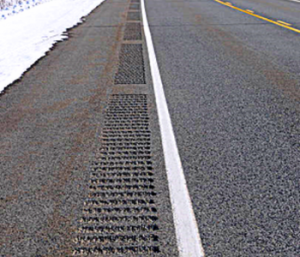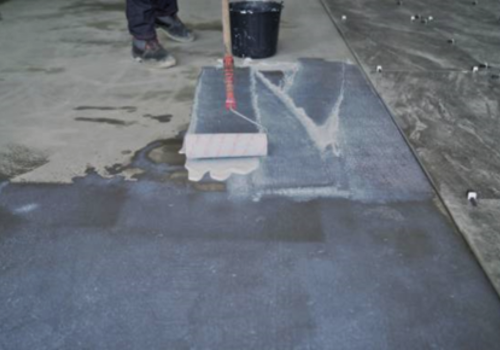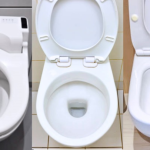
Different Types of Primers Used in Construction
In this article, we will explore the various types of primers commonly used in construction. Primers play a crucial role in preparing surfaces for painting or other finishing applications. They provide a smooth and durable base, enhance adhesion, and improve the overall appearance of the final coat.
What Is Primer?
A primer is a preparatory coating that is applied to a surface before painting or applying another type of finish. It is typically a paint-like substance that helps to create a smooth and even surface, enhances adhesion, and improves the durability and longevity of the final coat.

Primer serves several purposes:
Adhesion: Primer helps the paint or finish adhere better to the surface, ensuring that it sticks properly and does not peel or chip easily.
Sealing: Primer seals the surface, preventing moisture, stains, and other substances from seeping through and affecting the final coat. It helps to create a barrier that protects the underlying material.
Smoothness: Primer fills in small imperfections, such as cracks, holes, and uneven textures, creating a smoother surface for the final coat. This results in a more professional and polished finish.
Color Enhancement: Depending on the type of primer used, it can enhance the color and vibrancy of the final coat. It can also prevent the underlying surface from affecting the color of the paint.
Durability: Primer improves the durability and longevity of the paint or finish by providing a stable and consistent base. It helps to prevent peeling, cracking, and fading over time.

Types of Primers Used In Construction
In construction, there are several types of primers used for different purposes. Here are some common types of primers used in construction:
1. Oil Based Primer
Oil-based primer, also known as alkyd primer, is versatile and can be used with both oil-based and latex paints. It is commonly used for interior and exterior applications, particularly on wood surfaces such as new wood or dry wood. Oil-based primers provide excellent adhesion, stain-blocking properties, and durability, making them ideal for preparing wood surfaces before painting. They create a smooth and uniform base that helps the paint adhere better and provides long-lasting protection.
Advantages of Oil-Based Primer
Excellent Adhesion: Oil-based primers have superior adhesion properties, allowing them to bond well with various surfaces, including wood, metal, and previously painted surfaces. This ensures better durability and longevity of the paint or finish.
Stain Blocking: Oil-based primers are effective at blocking stains, such as water stains, smoke damage, ink marks, and other types of discoloration. They prevent these stains from bleeding through the topcoat, resulting in a clean and even surface for painting.
Durability: Oil-based primers create a strong foundation for the paint or finish, providing enhanced durability and resistance to wear and tear. They are particularly suitable for high-traffic areas or surfaces exposed to harsh conditions.
Smoother Finish: Oil-based primers tend to level out better than water-based primers, resulting in a smoother finish. This is especially beneficial when working on surfaces with imperfections or uneven textures.
Disadvantages of Oil-Based Primer
Longer Drying Time: Oil-based primers typically have a longer drying time compared to water-based primers. They can take several hours or even overnight to dry completely, which can prolong the overall painting process.
Strong Odor: Oil-based primers contain volatile organic compounds (VOCs) that contribute to a strong odor. Proper ventilation is crucial when using oil-based primers, especially in enclosed spaces. It is recommended to work in well-ventilated areas or use respiratory protection if needed.
Cleanup and Disposal: Oil-based primers require mineral spirits or turpentine for cleanup, which can be more challenging and time-consuming compared to water-based primers that can be cleaned up with water. Additionally, the disposal of used solvents must be done in accordance with local regulations.
Paint Compatibility: Oil-based primers may not be compatible with all types of paint. They are typically used with oil-based paints or solvent-based finishes. If you plan to use a water-based paint, it’s important to check the compatibility with the oil-based primer or consider using a water-based primer instead.
Also Read:
- Paint Works
- Fiber Cement Flooring
- Paint Chalking
- Types of Paint Brushes and Their Uses
- Soundproof Drywall
- Epoxy Flooring
2. Latex Primer
Latex primer is a water-soluble acrylic primer that is commonly used for various surfaces such as drywall, plaster, masonry, woodwork, and painted metal. It is an excellent choice for those who are concerned about volatile organic compounds (VOCs) because it has low levels of VOCs or is VOC-free. This makes it a preferred option when painting spaces for children or individuals with respiratory conditions.
Latex primer can be used in conjunction with latex paint or acrylic paint. When used with latex paint, the primer helps to create a smooth and even surface for the paint to adhere to, ensuring better coverage and durability. When used with acrylic paint, the primer enhances the adhesion of the paint to the surface, resulting in a long-lasting finish.
Advantages of Latex Primer
Flexibility and Fast Drying: Latex primers are known for their flexibility, which allows them to expand and contract with the surface. Additionally, they have a relatively quick drying time of around 3 to 4 hours, which helps to speed up the overall painting process.
Surface Evenness and Coverage: Latex primers are excellent at evening out the surface and covering repaired areas. They help to create a smooth and uniform base, ensuring that the paint adheres properly and provides an even finish.
Low VOC Emission: One of the significant advantages of latex primers is that they eliminate the emission of volatile organic compounds (VOCs). This makes them a healthier and more environmentally friendly option, particularly for spaces where children or individuals with respiratory ailments are present.
Easy Cleanup: Latex primers are water-soluble, making them easy to clean off from paint supplies. You can simply use soap and water to clean brushes, rollers, and other painting tools, reducing the hassle and time spent on cleanup.
Disadvantages of Latex Primer
Limited Stain Coverage: Latex primers may struggle to effectively cover dark stains and deep discolorations on surfaces. In such cases, it is recommended to use a specialized stain-blocking primer or an oil-based primer that offers better coverage and stain resistance.
Not Ideal for Hardwood and Metal Surfaces: While latex primers are versatile and can be used on various surfaces, they may not be the preferred choice for hardwood and metal surfaces. These surfaces often require specific primers that are designed to provide better adhesion and protection against moisture or rust.
Excellent Cracking Resistance: Latex primers do offer excellent cracking resistance. They have the ability to flex and expand with the underlying surface, which helps to prevent cracks and ensure a longer-lasting paint finish.
3. Shellac Primer
Shellac primer is primarily used for interior paint jobs. It is highly effective in blocking stains, including severe water and smoke damages to walls. Shellac primer creates a barrier that prevents the stains from bleeding through the paint, ensuring a clean and uniform finish.
Shellac primer can be used on a variety of surfaces, including wood, metal, plaster, and plastic. This versatility makes it a popular choice for different types of projects and surfaces. Shellac primer can be paired with both oil-based and latex-based paints. This flexibility allows you to choose the type of paint that best suits your needs and preferences.
Advantages of Shellac Primer
Shellac primer has a fast drying time of approximately 1 hour. This makes it a convenient option for projects that require quick turnaround.
One of the primary uses of shellac primer is to seal wood knots, pitch pockets, and stubborn tannin bleeding. It effectively prevents these issues from bleeding through the paint or stain.
Shellac primer is valued for its optimal stain-blocking qualities. It creates a barrier that helps to prevent stains from penetrating the surface, ensuring a smooth and even finish.
Disadvantages of Shellac Primer
Shellac primer produces harmful fumes, so it is important to ensure that the working environment is adequately ventilated. It is recommended for workers to wear a protective air mask to avoid inhaling the fumes.
While shellac primer has its advantages, it is not as versatile as latex and oil-based primers. Latex and oil-based primers can be used on a wider range of surfaces and have different properties that may be more suitable for certain projects.








